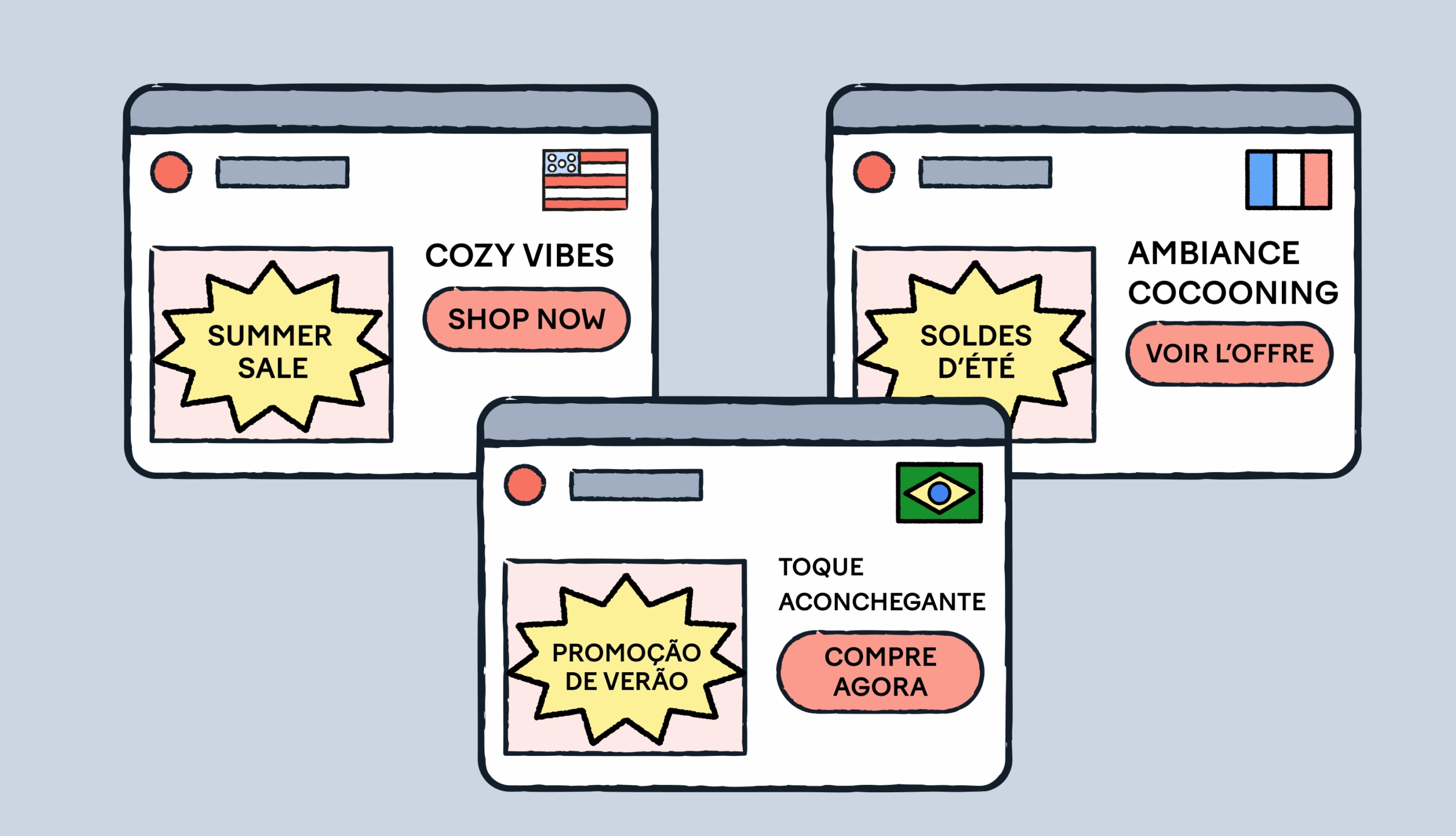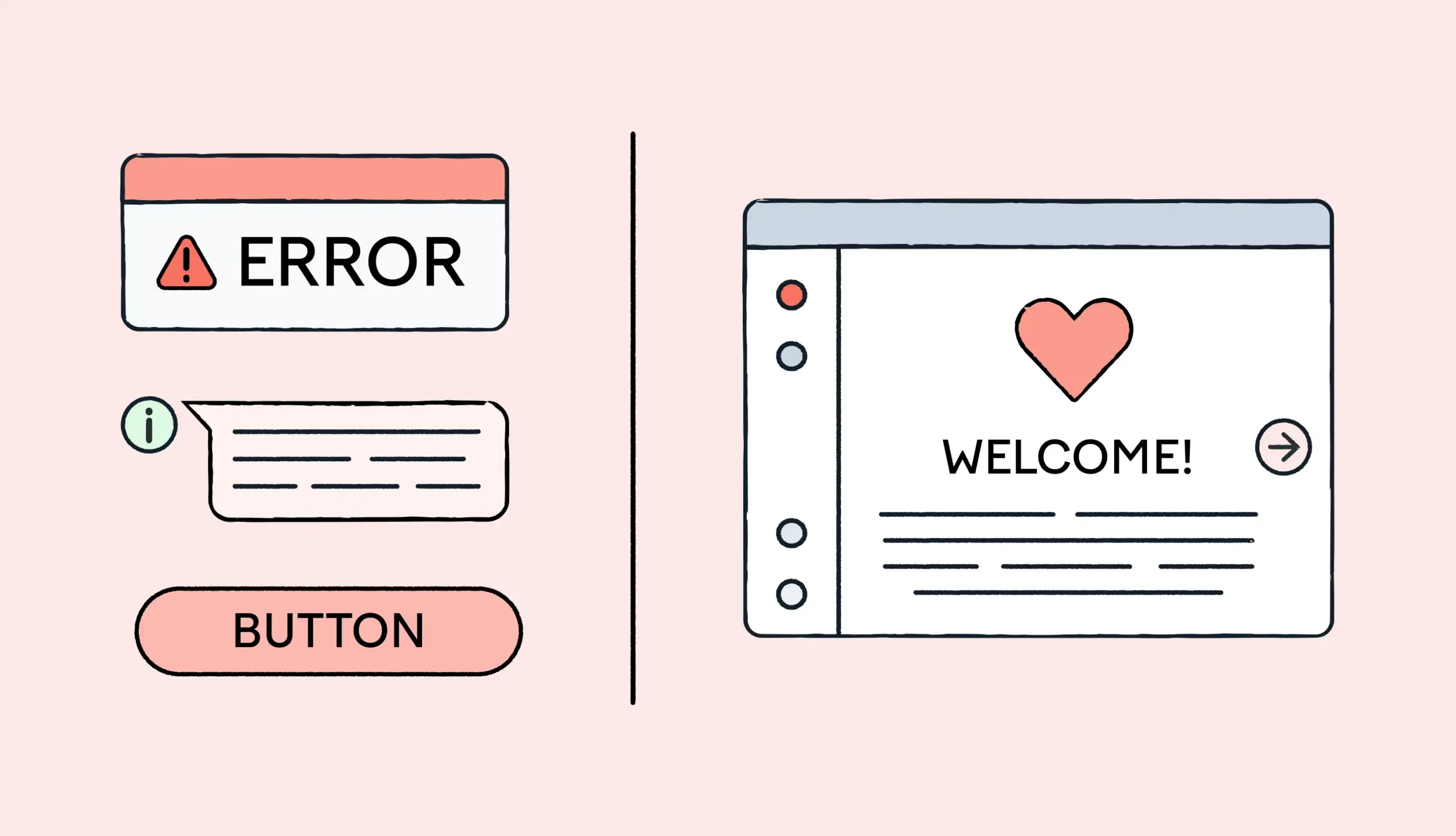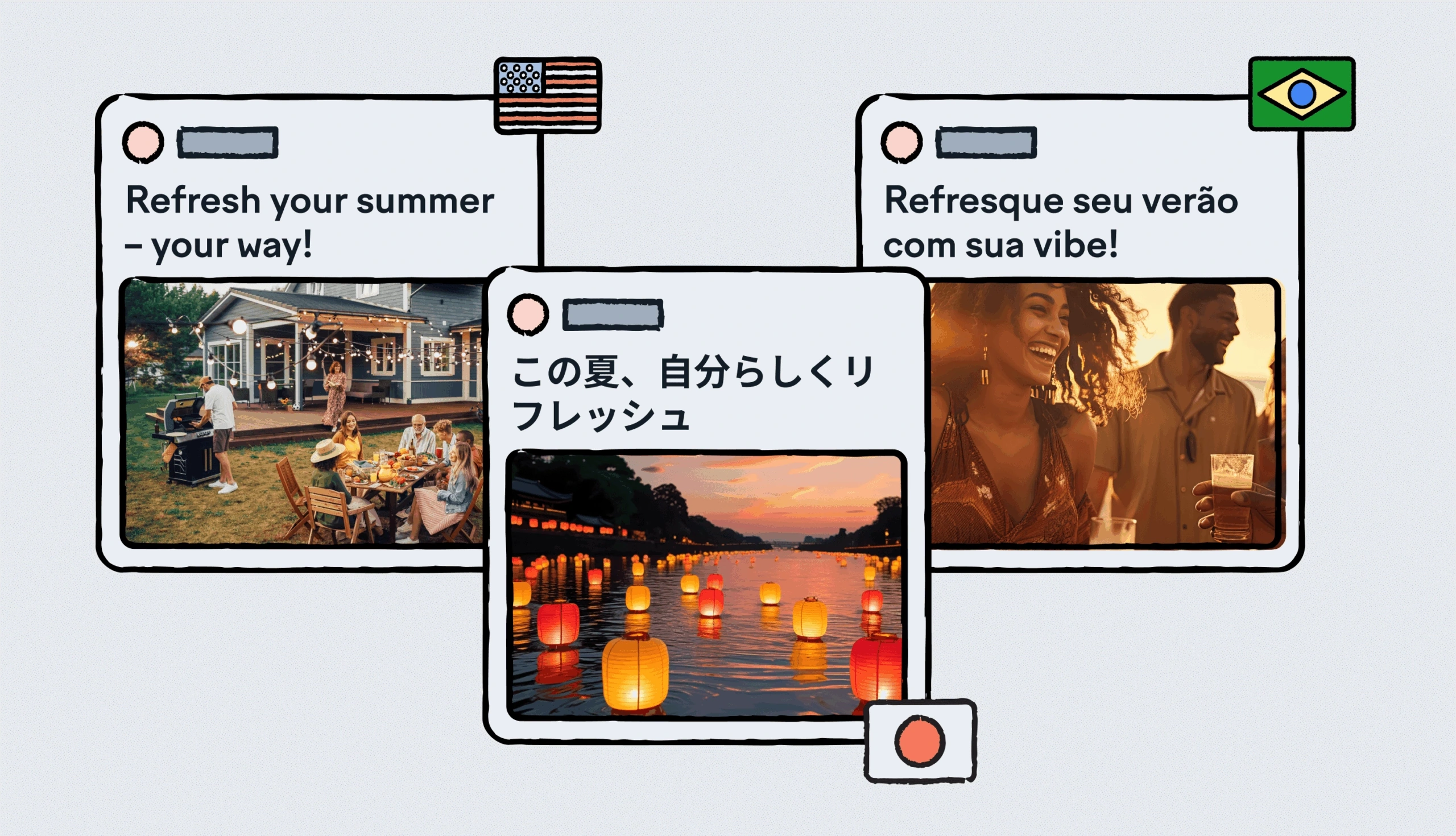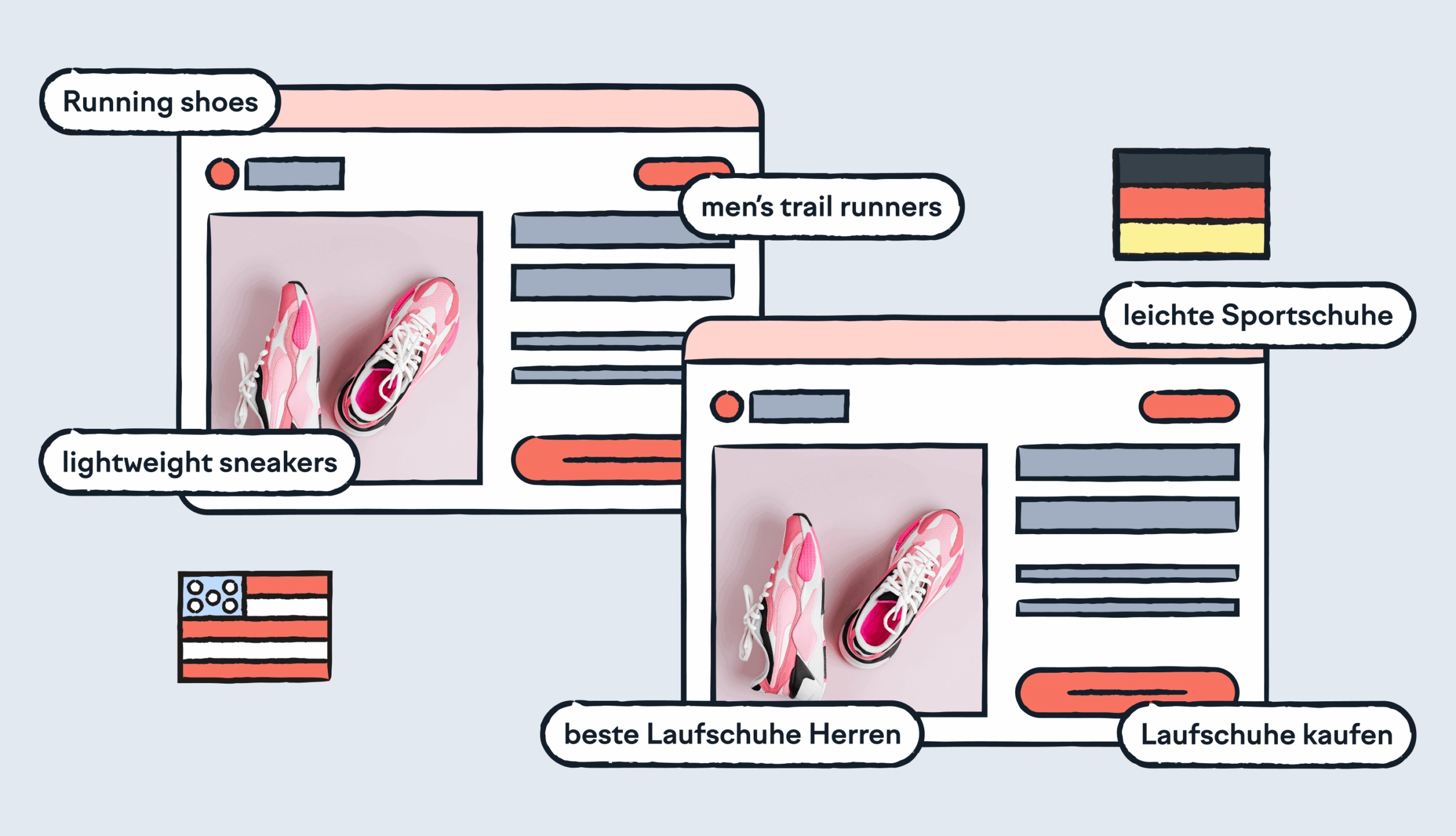Privacy policy update
If you’re planning to revise a legal document that explains how you collect, store, and share user data, it needs to get a proper update across all languages and markets. Precision matters because any ambiguity can trigger compliance headaches.
When to use translation: Legal language must stay verbatim across all locales. Accurate translations are of greatest importance here.
When to use transcreation: A first-time onboarding flow needs friendly tone and humor that feel native in each market. In this case, it makes sense to go the extra mile with transcreation.
Global ad launch
A headline-driven campaign that rolls out in several countries at once requires translation and localization. The copy must grab attention in every market without losing brand voice.
When to use translation: Price points, dates, and T&Cs sit in the small print. This is where accuracy rules, so resort to precise translations.
When to use transcreation: The hero tagline and call-to-action have to light the same spark in Tokyo, Berlin, and São Paulo. You need to think beyond the frame of a given text and use transcreation to transfer both meaning and feeling.
How-to video script
A step-by-step narration that guides viewers through a feature or workflow can be incredibly effective. However, it needs to stay tightly aligned with what appears on the screen, and to be properly translated and adjusted for the target audience.
When to use translation: Step-by-step instructions mirror what’s on screen, so wording must align. Translate subtitles for the best user experience.
When to use transcreation: The intro joke, cultural reference, or closing catchphrase risks falling flat without a local spin. Transcreate so prevent this from happening.
The cost of choosing the wrong one
Choosing between transcreation and translation is also a budget call. Get it wrong, and the bill arrives in rework, delays, or even PR fallout. Here’s where misalignment hits hardest.
Re-work and project delays
A tagline that deserved full transcreation can look fine in English, but when it’s run through straight translation for Japan, it might result in a huge miss. So, what happens then?
You end up paying twice. First for the quick job, then for the emergency rewrite, plus the extra days (or weeks) your campaign sits on ice. Not good.
Brand damage and lost trust
HSBC Bank famously burned an estimated $10 million on rebranding after its line “Assume Nothing” crossed borders as “Do Nothing.” One mismatched slogan triggered a global cleanup and seeded doubt in customers’ minds. And it’s all because a creative tag was treated like any other string.
Legal or compliance risk
Now let’s try flipping the mistake. Apply transcreation where precision is mandatory, and you can void contracts or jeopardize safety. A casually re-phrased voltage spec or privacy clause may invite recalls, fines, or regulator scrutiny that dwarf normal localization costs. No need to get creative where clarity matters.
Hidden opportunity cost
Marketing copy that needed transcreation but only got translation rarely sparks headlines. It just underperforms in silence. Lower click-throughs, higher bounce rates, and muted word of mouth siphon off revenue quarter after quarter. Yet few teams tracing the leak back to language.
Can you combine both? (Yes, and you probably should)
Translation and transcreation are the two levers on the same control panel. There’s a place for each, depending on the project. Smart teams blend them to hit deadlines and emotions without blowing budgets.
Start with a triage pass
Tag each content type as precision or persuasion. UI strings, T&Cs, error messages? Push them straight into translation memory for speed and consistency. Taglines, hero copy, video intros? Route them to a transcreator with a creative brief.
Share assets across both streams
Your glossary, style guide, and brand voice doc should sit in one shared workspace. Translators lean on the glossary for exact terms. Transcreators use the voice guidelines to match tone even when they rewrite from scratch.





